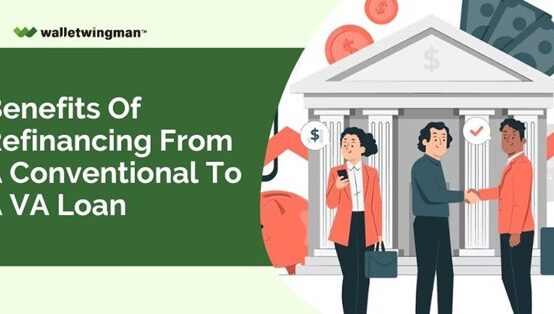The Department of Veterans Affairs has specific rules for occupancy when a VA loan is used to buy a house. Many of these VA minimum property requirements can be found in VA pamphlet 26-7, the official lender’s handbook issued by the Department of Veterans Affairs.
But that “pamphlet” is hundreds of pages long, and you probably have more important things to do than sift through it. So, we’ve done it for you. This article explains the VA loan occupancy requirements and rules for homeowners.
(Note: The following information applies to home-buying scenarios, mainly where the borrower uses a VA loan to purchase a house. Refinancing scenarios have their own set of rules.)
Purpose of Occupancy Rules

Regarding VA loans, the goal of occupancy restrictions is to guarantee that the borrowers occupy the houses acquired with this kind of government-backed funding as their principal residences.
In order to avoid exploitation of the program for investment or vacation houses, the VA requires borrowers to fulfill the VA home loan certificate of eligibility criteria and reside in the residences they buy.
This guarantees that VA loan advantages, such as reasonable terms and no down payment or low payment requirements, are used to help veterans, active-duty military members, and qualified surviving spouses get stable housing.
Respecting occupation regulations guarantees that the VA loan refinance funds are used to aid veterans of the armed forces, which is how it was meant to be used.
General Occupancy Requirements for VA Loans
Here is the Department of Veterans Affairs general rule regarding occupancy from Chapter 3 of the lender’s handbook mentioned above:
“The veteran must certify that he or she intends to occupy the property as his or her home personally.”
The VA often refers to “veterans” in their loan guides and other materials. However, you do not have to be a veteran to qualify for this program. Military members who are currently serving can also qualify if they meet specific length-of-service requirements.
Congress created the U.S. Department of Veterans Affairs and also handed down some of the rules and requirements still in place today. One of those rules established the primary occupancy and residency requirements for VA-guaranteed mortgage loans.
The official handbook states that the VA can guarantee VA home improvement loan for eligible borrowers when those loans are intended to “purchase or construct a residence, including a condominium unit to be owned and occupied by the veteran as a home…”
Which leads to the next logical question:
How long do you have to move into the home when using a VA loan?
Occupancy Within a “Reasonable Time”

Generally speaking, home buyers who use VA loans have up to 60 days from closing to occupy the home as their primary residence. However, the Department of Veterans Affairs allows for several exceptions, which could stretch the timeline to a year.
The official guidelines often use the phrase “reasonable time” when describing the occupancy rules when a VA loan is used. In this context, the reasonable timeframe is 60 days after the loan closing.
However, there are specific scenarios where a person cannot move into the home right away. For instance, the house might need repair work before the buyer can move in. And by its very nature, military service can also disrupt or delay the moving process.
The Department of Veterans Affairs allows exceptions for these and other scenarios, extending the “reasonable time” far beyond 60 days.
Generally speaking, a more extended timeframe may be acceptable if both of the following conditions apply:
- The borrower certifies that they will personally occupy the property as their home at a specific date after loan closing, and…
- The veteran will be able to live on the land for a certain future date due to a specified future occurrence.
If both conditions are met, occupancy of a VA-loan-purchased home can be put off for up to one year.
Considerations for Spouses and Children

The Department of Veterans Affairs also allows exceptions relating to spouses and children who occupy the home while the military member is unable to do so.
A dependent kid or spouse can fulfill the general VA occupancy requirements if a person buys a home with a VA loan but cannot immediately move in due to military service. Regarding children, the handbook states that “the veteran’s attorney-in-fact or legal guardian of the dependent child must make the certification and sign VA Form 26-1820.”
Move-In Delays Due to Repairs or Renovations
Repairs and renovations can also prevent a home buyer from moving into the house within a “reasonable time.” The VA also allows exceptions for these cases.
Home buyers who cannot move in right away because of repairs or renovations could also get an exception to the 60-day “reasonable time” occupancy requirement.
But here again, the military member or veteran must certify that they fully intend to occupy the home as a primary residence once the work has been completed. This program is not designed to finance vacation homes or investment properties.
Key Takeaways From This Article
We’ve covered a lot of important information in this guide. And, like many VA loan-related topics, it can be a bit confusing. So, let’s wrap up by summarizing the most essential points.
1. Primary Residence
Homes bought with a VA loan must meet the primary residence criteria, which states that the borrower must plan to occupy the property as their primary and permanent abode.
It is a condition of the VA loan program that the borrower utilize the house as their primary residence, where they spend the most of the year, rather than for investment properties or vacation houses, as the loans are expressly meant for veterans and active-duty people to purchase and inhabit one.
Borrowers who want to take advantage of VA loans’ advantageous terms and advantages must comply with these criteria. For veterans, active-duty military members, and qualifying surviving spouses, the VA seeks to achieve its goal by guaranteeing that borrowers live in the homes they buy.
The borrower may face fines or other repercussions from their loan arrangement if this criterion is not met.
2. 60-Day rule
Although the VA is vague about the timeline, generally, you have 60 days after the VA loan closes to move into the home.
In order to prevent undue delay in the borrower’s move, this period gives them essential flexibility in their relocation arrangements. But in certain situations, including deployment or temporary military assignments, there can be an exception, allowing borrowers to take more time to move.
Reliability in terms of deadlines guarantees that borrowers complete their VA loan program commitments and preserves the integrity of the program for qualified applicants.
3. Exceptions
Of course, there are exceptions to the primary residence requirement rule in VA loans in the form that acknowledges the need for in-house facilities such as deployment abroad or overseas duty assignments.
If you have a valid reason (such as military deployment or property repairs), the VA allows for extended occupancy timelines of up to 12 months on a case-by-case basis.
In this scenario, the VA applicants may enjoy a reprieve to buy a house under the VA loan without having to move in (as the primary resident) immediately. On the other hand, they may clarify what constitutes the property as their primary residence with the allusion to return home after they fulfill their service requirements.
This provision aims to recognize the challenges that military personnel undergo and enable them to enjoy the opportunity of homeownership despite their short stay.
Subsequently, however, the borrowers ought to have a legitimate purpose or intention to reside in the property as their living place apart from being qualified as an exception.
4. 12 Months
Most VA home loan lenders require you to indicate your intent to live in the home as your primary residence for at least 12 months, although there may be flexibility for valid reasons.
5. Spouse Occupancy
Deployment or work commitments may make it impossible for you to move in immediately. In such cases, your spouse can fulfill the occupancy requirement.
6. Penalties for Non-Compliance

The sanctions for violation of VA loan occupancy regulations might be challenging. Yet if they fail to occupy their property on a significant basis within the required time or do not maintain it during the loan term, they will violate the loan agreement unconditionally.
The consequences could be that the lender might call the loan due in full or the VA refuses to give the guarantee to the borrower for the other loans. Such sanctions can have serious financial consequences and even destroy the chances for future financing for the borrower.
Since this understanding and compliance with occupancy guidelines is essential, borrowers need to keep in mind the repercussions and safeguard the benefits of the VA loan program.
7. Active-Duty Exceptions
Active-duty service members have more flexibility in fulfilling occupancy requirements, especially when deployed away from home.
Most of the occupancy and move-in requirements for VA loans are reasonable. For most home buyers, 60 days is more than enough time to move into a home after closing. And there are exceptions for those with extenuating circumstances.
Conclusion
Assuring that properties bought with VA financing are utilized as primary residences by borrowers is one of the main functions of occupancy restrictions in the VA loan program.
The VA wants to fulfill its purpose of providing veterans and military members with stable homes, so it requires borrowers to occupy the residences they purchase. For borrowers to profit from the VA loan program, they must comprehend and abide by these guidelines.
Before applying for a VA loan, applicants should carefully evaluate their goals and responsibilities because breaking occupancy rules might have significant repercussions.
M


 The VA Cash-Out Refinancing Process Explained
The VA Cash-Out Refinancing Process Explained  Benefits of Refinancing From a Conventional to a VA Loan
Benefits of Refinancing From a Conventional to a VA Loan  Title Insurance for VA Loans: What Borrowers Need to Know
Title Insurance for VA Loans: What Borrowers Need to Know  How to Make an Offer on a House When Using a VA Loan
How to Make an Offer on a House When Using a VA Loan  How Soon Can I Use Another VA Loan Again?
How Soon Can I Use Another VA Loan Again? 